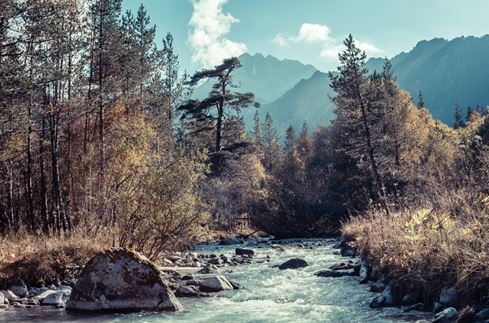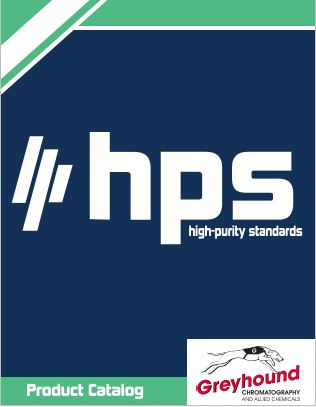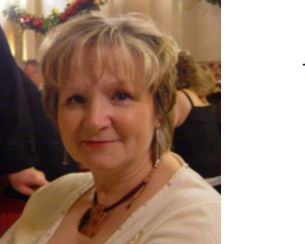New Global Model to Shed Light on Incecticide Runoff
Research recently published in the journal Environmental Pollution points to streams in the U.S., Central America, the Mediterranean and Southeast Asia as being particularly susceptible to pollution related to insecticide runoff. The scientists, from the Helmholtz Center for Environmental Research, the University of Koblenz-Landau, the University of Milan, Aarhus University and Aachen University, modeled a global map of insecticide runoff.
Modeling runoff on a global scale
Pesticides can affect the land surrounding the area where they're used, but the team of scientists focused their model on where insecticides would affect waterways. These findings may be of increasing importance as pesticide use around the world increases because of global warming, the increase of food demand and farming techniques change.
The researchers used data from NASA and other major weather institutions as well as 77,000 smaller weather stations around the world to create a global model that shows insecticide runoff and pollution as related to rain and water patterns.
"Our analysis provides a global map of hotspots for insecticide contamination that are a major risk for biodiversity in water bodies. To our knowledge this is the first study that assesses insecticide contamination of water bodies on a global scale", said Matthias Liess, Ph.D., of Helmholtz Centre for Environmental Research in a statement.
Among other trends, the map showed that insecticide exposure and pollution rises as you head south in North America, Europe and Asia. This model may help people around the world install contamination and pollution safe guards as well as identify areas of danger and protect the environment and the population from further trouble.
Why worry about runoff?
While this model can be used by government agencies and nongovernmental organizations to establish a pollution reduction plan, there are also actions that farmers can take on a smaller scale. The first step is to find out what causes runoff and what risk insecticide runoff presents to the environment and people at large.
If you use your pesticides as directed you should reduce your chances of contaminating a waterway, but there are environmental factors that can adjust that plan. Insecticides can get into the water by being absorbed into the soil, dissolving into the soil or leeching out of the ground eventually making their way into a stream, lake or river.
One of the largest reasons that insecticide runoff is a concern is the effect it can have on aquatic life, Rutgers University explained. Fish and aquatic invertebrates can be harmed or killed by even low levels of certain types of insecticides being exposed to the environment. Once these fish or invertebrates are affected, it can change the entire ecosystem, increasing the number of prey and hurting their predators.
Another way that pesticides can affect animals in the water, according to Rutgers, is by acting as a hormone mimicker and changing healthy breeding patterns.
Pesticides also present a serious risk to humans. If insecticides get into drinking water they present immediate dangers to people even in extremely small portions. Additionally, this type of contamination can be extremely expensive to clean up depending on the severity.
While modeling can shed light on where pesticides will go, Rutgers reminded that it's difficult to determine the exact source of a runoff. As the chemicals come from the soil often rather than directly from a spray, it can be a conflagration of different pesticides. They can go directly from a field or crop into a water source or be transported through groundwater sources.
It underscores the safe and smart use of pesticides, whether in your back yard or acres of fields. The smarter everyone is with these chemicals the lower the risk of runoff-related issues is.
CONTACT US
Tel: +44 (0) 151 649 4000
Email: marketing@greyhoundchrom.com
FOLLOW US
YOU MAY ALSO BE INTERESTED IN OUR NEWSLETTER
About the Author
Susan Massie, Sales & Marketing Director, Greyhound Chromatography and Allied Chemicals Email: sue@greyhoundchrom.com
Susan Massie is the Sales & Marketing Director for Greyhound Chromatography and Allied Chemicals, affectionately known as 'Greyhound' in our scientific community. Greyhound was founded by Susan's husband Paul Massie more than 40 years ago, Susan hasn't been in the business for all of that time but has been involved with Greyhound for over 17 years. Greyhound continues to grow, expanding into new markets and taking on the challenges of our ever changing environment. It's heartwarming to witness the world waking up to the fact that we are damaging our planet on a daily basis. Every action we take has a direct effect on our planet and the world we leave behind for future generations. Susan is passionate about climate change and is happy to work in an industry that can have a direct effect on reducing the impact of our actions on the environment. All of the team at Greyhound take our responsibilities very seriously, the products that we supply are used by the world's leading scientists and chemists as they endeavour to monitor and repair the environment. All is not lost, if we all take responsibility for our actions, from reducing our waste and reusing or recycling our material collateral we can make a difference. The internet is full of useful advice and guidance, Susan is proud to contribute to that wealth of knowledge whenever she can.
Greyhound prides itself on personal service which provides prompt, efficient, cost-effective, safe delivery of all products. Greyhound provides technical advice and distribution of Certified Reference Standards and Materials, Laboratory Consumables, Solvents and Reagents across all scientific disciplines. Greyhound Chromatography offers over 1 Million products from its UK warehouse. The team at Greyhound are proud to support the work of the world's leading scientists and chemists as they challenge the abuse of our planet and try to make a difference to the world we leave behind for our ancestors.
You can view Susan's Linked In Profile here https://www.linkedin.com/in/susan-massie-79ab4121/


















